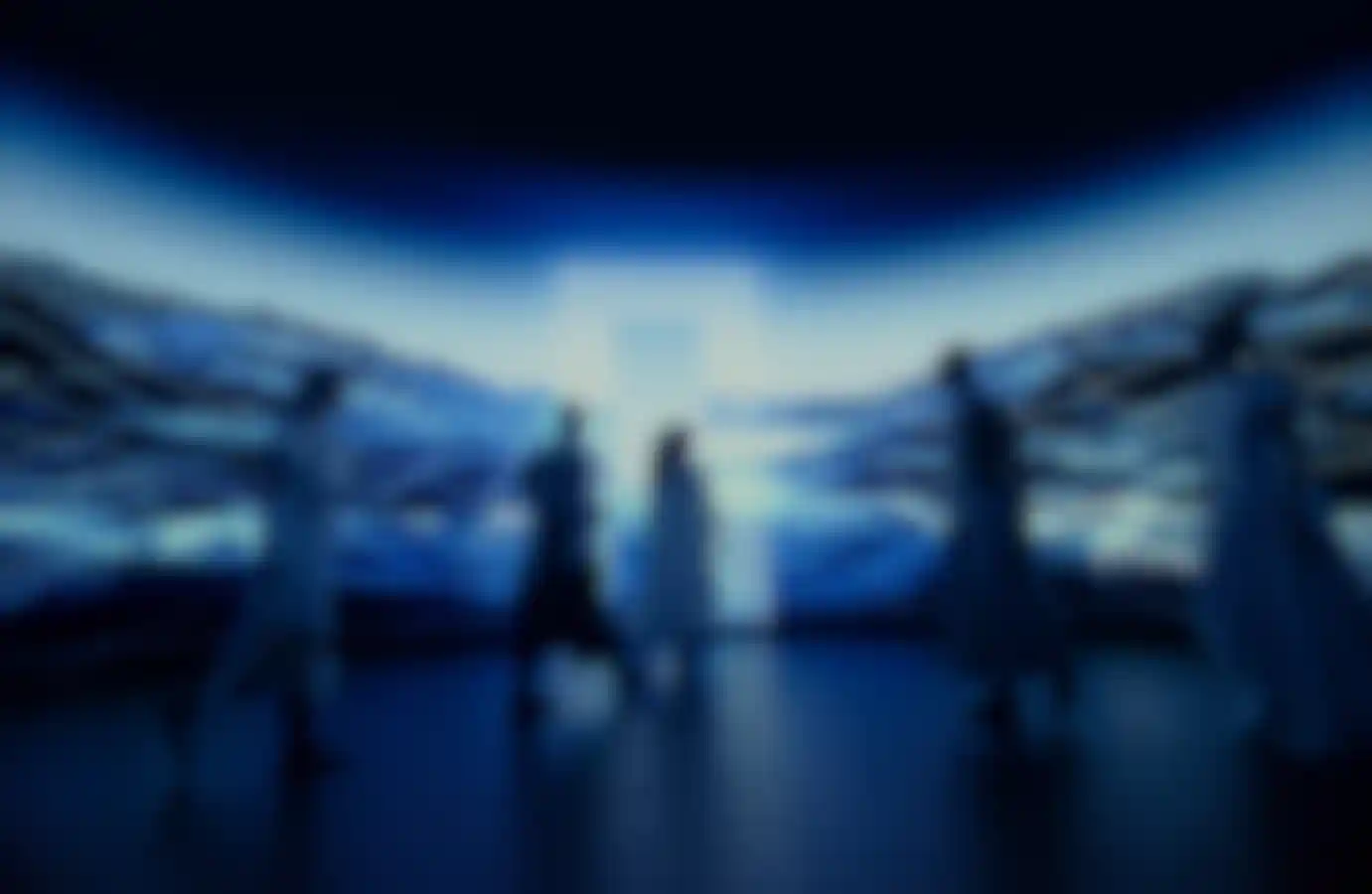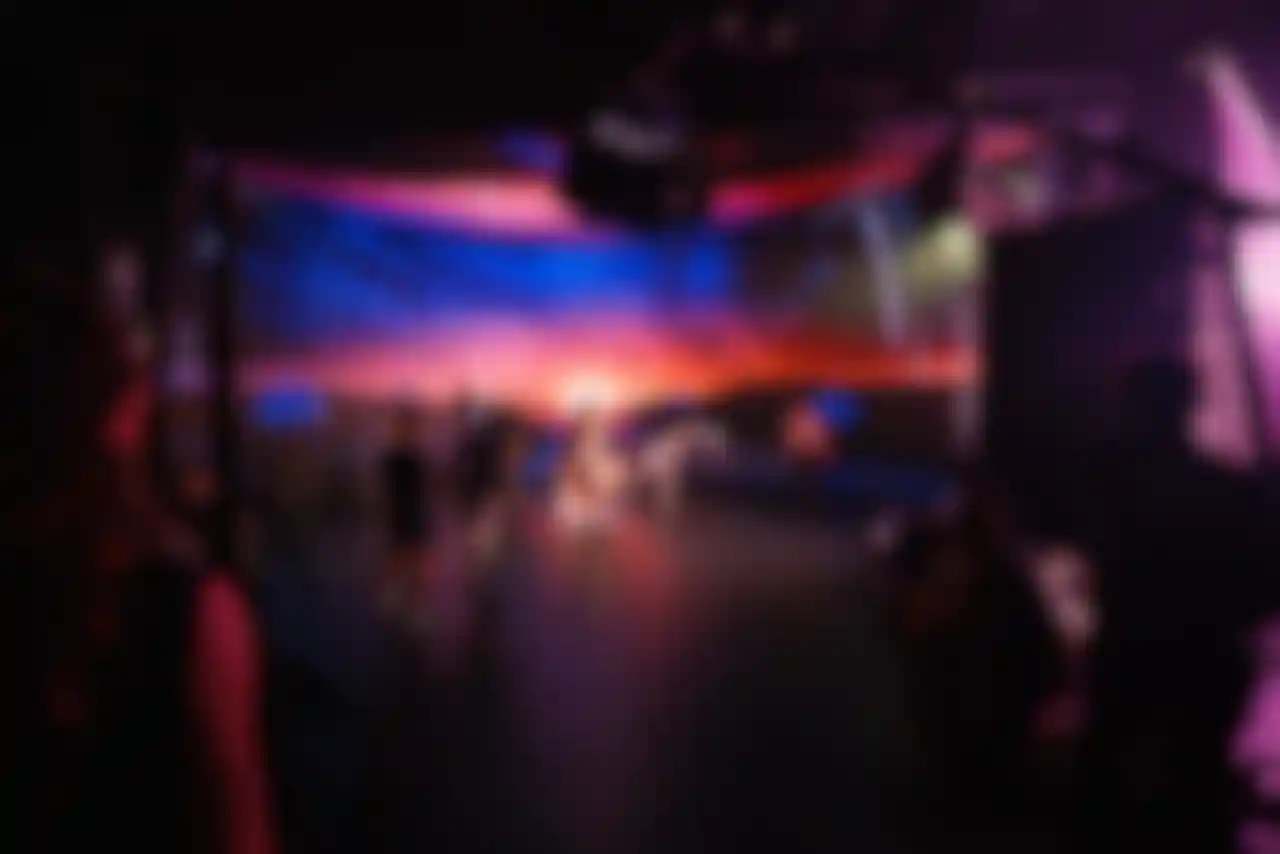
Exploring the ‘Dimensions’ of Fashion With Maxon One How SCAD and Scholar created an immersive backdrop for a standout runway show.
A dynamic convergence of fashion, music, dance, design and CG animation dynamic, “Dimensions” opened the Savannah College of Art and Design’s (SCAD) prestigious School of Fashion graduate runway show in Atlanta earlier this year.
SCAD collaborated with creative production house, Scholar, to create the film, which was captured on SCAD’s cutting-edge LED XR stage and brought to life against an immersive backdrop of atmospheric visuals created in Cinema 4D and Redshift.
Scholar’s commitment to creating visual spectacles using a mixed-media approach to storytelling drives an inventive culture. Fresh from an award-winning run of campaigns for LEGO Education and Riot Games, Scholar was thrilled to work with SCAD Fashion, an opportunity that saw the team flexing their creative muscles to create a film that captured the energy of the show.
We asked Director/Creative Director Chris Finn and Associate Creative Director Vin Kim to tell us more about the project and how they stretched their tools to create the perfect visual spectacle.
How did this project for SCAD come to you and how did you develop the film?
Finn: Many of us at Scholar are SCAD alumni and we always look for opportunities to partner, often doing virtual panel chats, portfolio reviews and campus visits to check out the next generation of motion designers and filmmakers. Each year, the SCAD Fashion team looks for an exciting new opener for the graduate runway show, and I was thrilled to be able to jump into that opportunity.


The brief came with a few technical parameters, like shooting up to 100 student garments and filming in Savannah, but it was conceptually and creatively very open. I used the treatment pitch phase to craft a creative concept around the ask and felt inspired to create a film that focused on the performances of the talent and the beautiful visual worlds that immersed them.
The idea to use a multiverse journey as a metaphor for the creative process was born out of the need to incorporate so many unique fashion looks. And we always have a strong technical approach, so the opportunity to utilize SCAD’s XR stage was very exciting and informed the concept.
Talk about the collaboration between Scholar and SCAD?
Finn: It was full-on from start to finish and there was a lot of trust on both sides to work quickly towards our shoot schedule and final delivery dates. From early conceptual ideation and the curation of garments into the different worlds, we were constantly sharing design and animation references. This carried into the shoot days as well, allowing me and the crew to really focus on the performance, lighting and filming of the story.

How did you approach the creation of so many different worlds?
Finn: The process began with a combination of story beat writing, running in parallel with world-creation, which started with the creation of mood boards for the 20 worlds. The exciting part of this design process was that we really got to define what a world could be in the film’s universe.

We knew it would be important to end up with a diverse set of worlds in terms of color palette, texture and form to allow the garments to be grouped correctly. I was constantly scrolling through garment photos to find nuggets of inspiration or trying to see the common denominator between a group of garments to inspire a new world. Once we arrived at a series of organic and abstract worlds, we dove into design and animation using Cinema 4D and Redshift to create every visual backdrop.
What were some specific tools or techniques that helped create the film?
Kim: For a lot of the landscape scenes, Redshift's Matrix Scatter was handy to cover the ground with grass and populate it with thousands of flowers. Connecting that setup to a shader utilizing a RS Color User Data node helped us quickly assign a range of different colors without having to generate multiple shaders.
We also had a scene where we needed some of the flowers to glow and illuminate on and off to the music, so we created a Mograph setup using Fields to drive the color values. This allowed for a somewhat procedural animation, avoiding the need to manually keyframe brightness values on and off with the beat.

Did the LED XR stage present any specific challenges for your design team?
Finn: From a technical standpoint, the biggest challenge was world building in pre-production and rendering the 20 different backdrops to the scale that was necessary for the screen. In this case, the looping screen content needed to be rendered at a very high resolution of 11520 x 3200 pixels.
Technical render details, like low sample quality, became more apparent on the large screen and had to be carefully considered. We found ways to optimize the process using Redshift’s denoisers, as well as upscaling tools in compositing. Still, it was an unfamiliar aspect ratio to design around and a fun challenge for the team to break outside of the typical 16:9 aspect ratio.

Did you pick up any tips during the project that you would like to share?
Kim: The abstract worlds required the most experimentation and R&D, and we picked up a couple of new tricks along the way. For the massive tunnel scenes made of thousands, or even millions of moving parts, we had to come up with a setup that not only imposed a sense of cosmic scale but also did not bog down the Cinema 4D viewport. Utilizing MoGraph tools, a simple, nested cloner setup proved to be the most effective.
To break it down, it was a basic cube in a cloner that would create a rectangular arrangement. Then, the cloner would be replicated with another cloner and so on. For one scene we ended up with seven to eight layers of nested cloners, each driven by different effectors. Once we had that setup, we would just plug different effectors onto the various cloners and each little adjustment gave us a dramatically different result. It's a very basic idea, but it felt like rediscovering fire!

How did the music affect your creative process?
Finn: A huge part of the process to bring this film to life was the attention to music and the overall soundscape. We worked closely with Cypher from day one to create a bespoke track with a mood and rhythm that would carry us through each stage of the animation. All our backdrop animations were timed against a section of the music to correspond to certain beats, crescendos or tones. We knew we wanted lots of moving and flashing lights in our renders, which would translate to interesting bounce lighting on the talent on set, giving our shots more life and energy in the film.
Looking back, what was most rewarding about this project?
Finn: As a director, I’ve been working to find new and inventive ways to help brands tell visual stories and create spectacles that demand attention. I love smashing mediums and technical approaches together and stretching the limits of our creative toolset, and this project with SCAD Fashion checked a lot of the boxes in that respect
Project Credits
| Job Title | Name/s |
|---|---|
Production Company | Scholar |
Director | Chris Finn |
Managing Executive Producer | Kirsten Noll |
Director of Production | Tyler Locke |
Head of Production | Nicole Smarsh |
Line Producer | Richard Kaylor |
Cinematographer | Josh Saideman |
Production Designer | Parker Beck |
Design & Animation | Scholar |
Creative Director | Chris Finn |
Associate Creative Director | Vin Kim |
Managing Executive Producer | Kirsten Noll |
Director of Production | Tyler Locke |
Head of Production | Nicole Smarsh |
Sr Producer | Kev Jones |
Lead Designers | Chris Finn, Vin Kim |
Designers | Liam Elias, Leah Evans, Zach Herdman, Jina Kwon, Siena Mae, Nick Scarcella |
Lead 2D/3D Animators | Chris Finn, Vin Kim |
2D/3D Animators | Michael Cafarelli, Leah Evans, Zach Herdman |
2D Animators | Alex Bernas, Danni Fisher-Shin |
FX Artist | Tim Hayward |
Senior Compositor | Ryan Kaplan |
Compositor | Dae Kang |
Media Manager | Adrianna McKinley |
Editorial | Scholar |
Editor | Chris Finn |
Assistant Editor | Adrianna McKinley |
Telecine | Elliott Powell |
Colorist | Elliott Powell |
Color Producer | Juan Felipe Díaz |
Mix, Sound Design & Music | Cypher |
Sound Design & Mix | Joseph Sims, John Black |
Score | Joris van Grunsven |